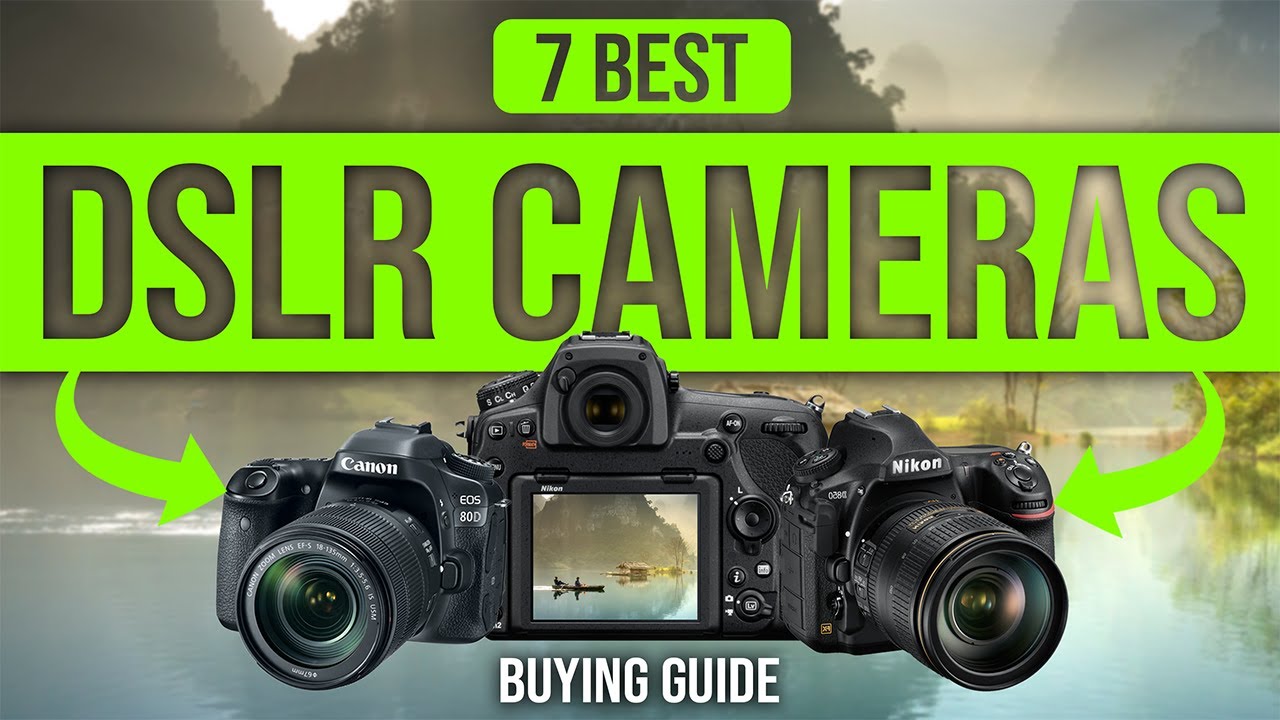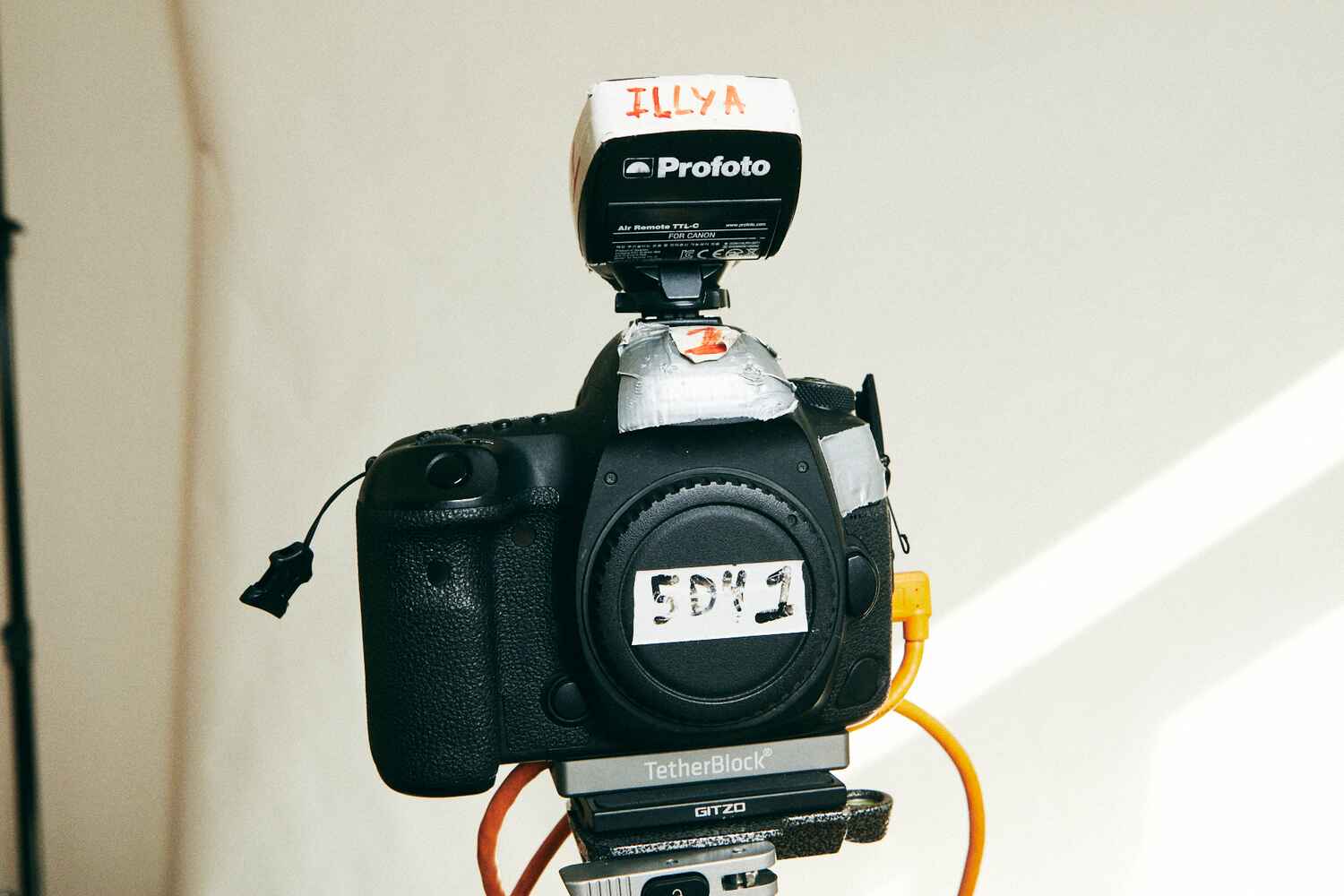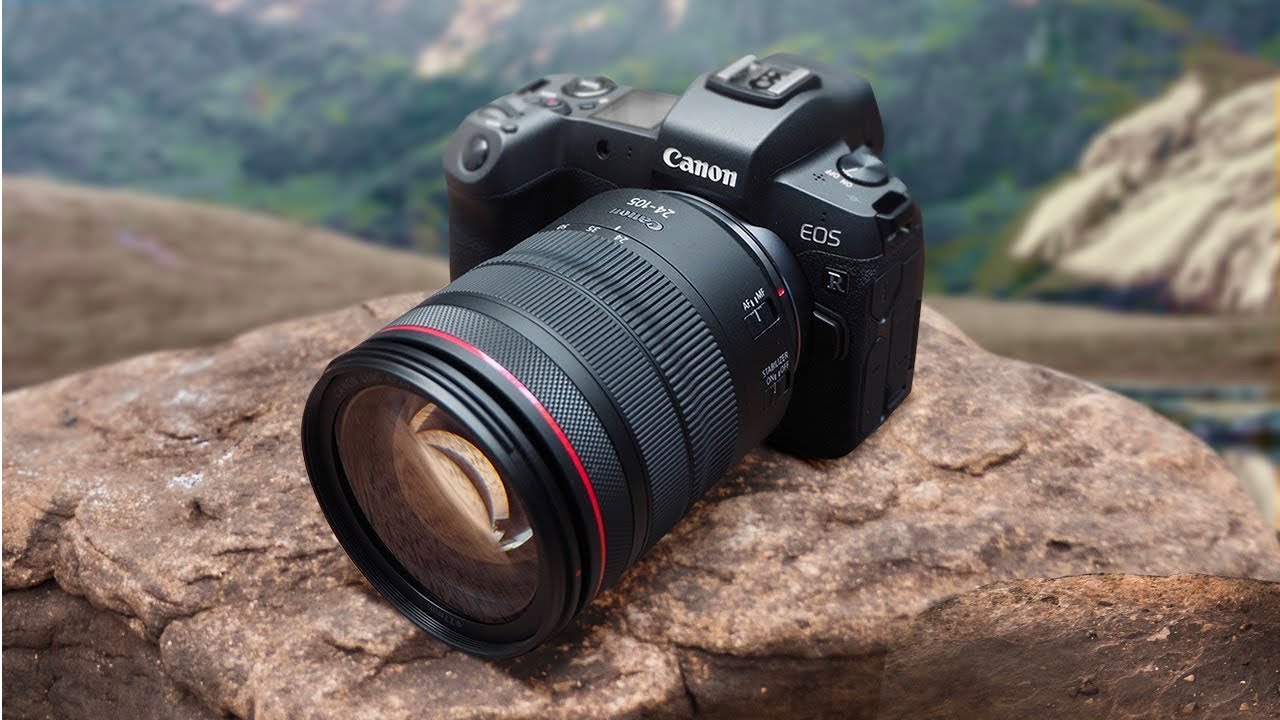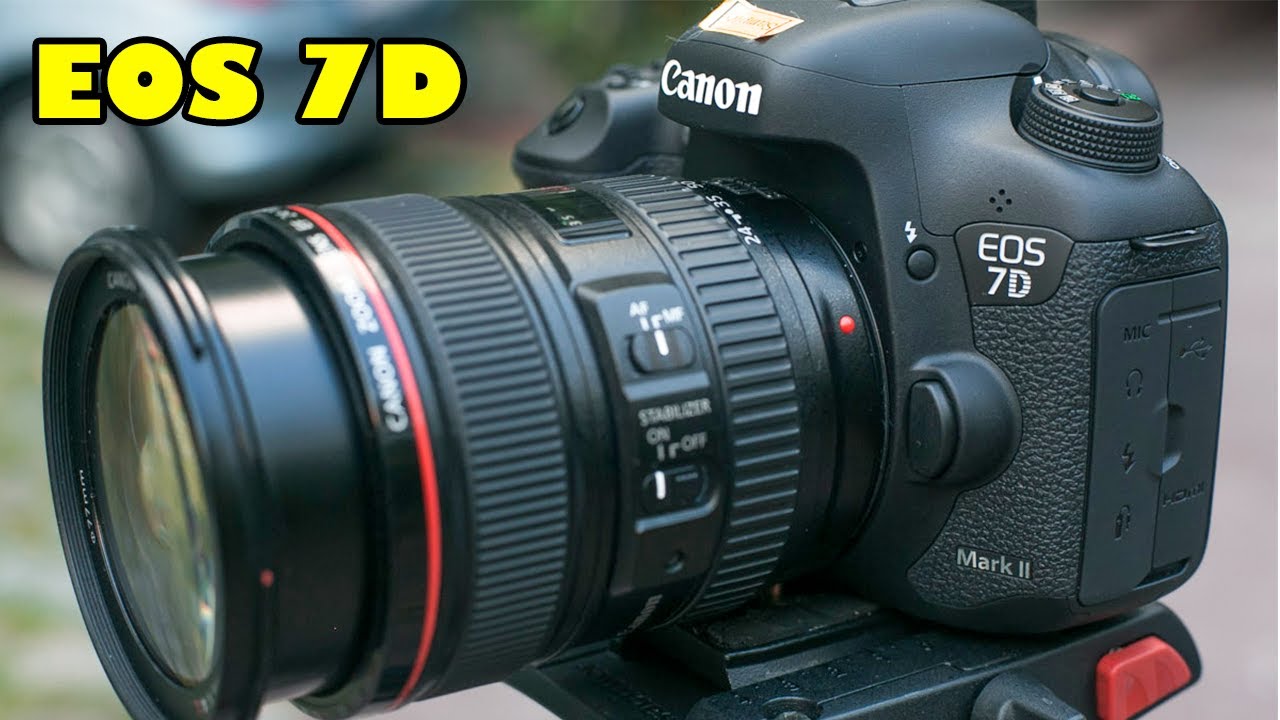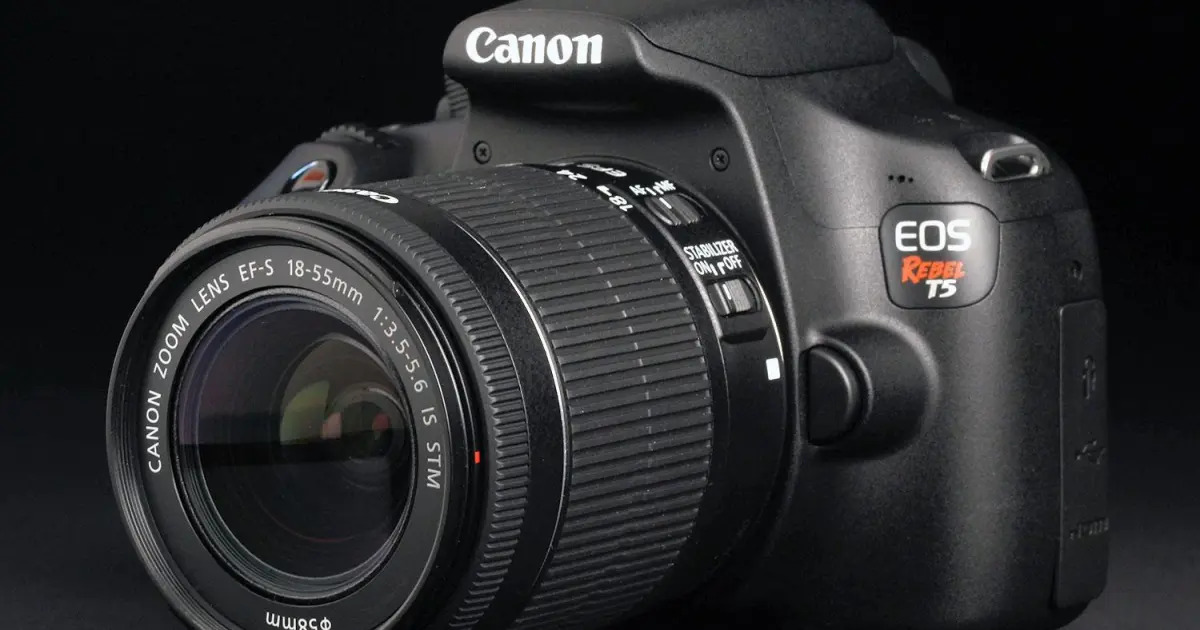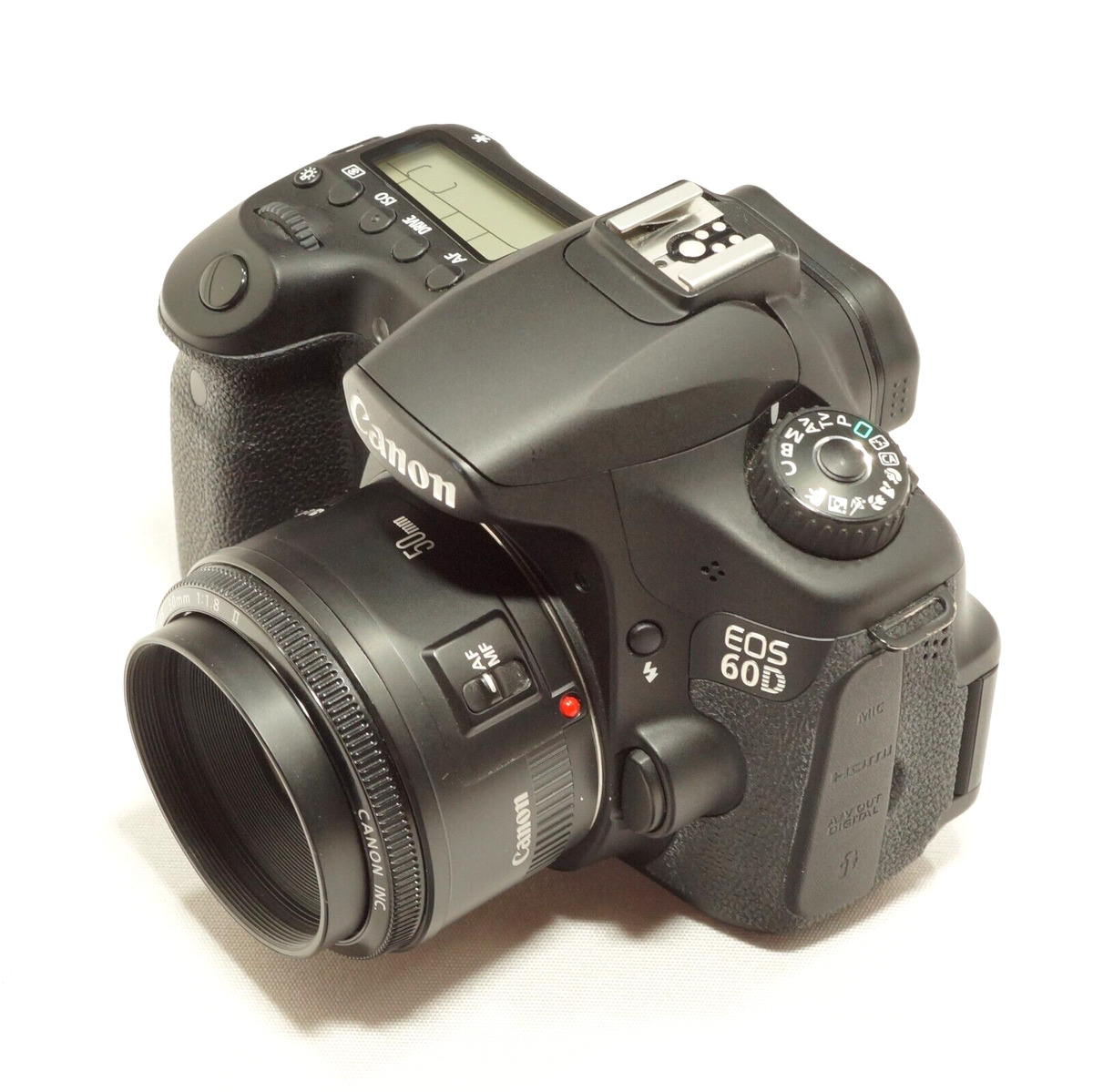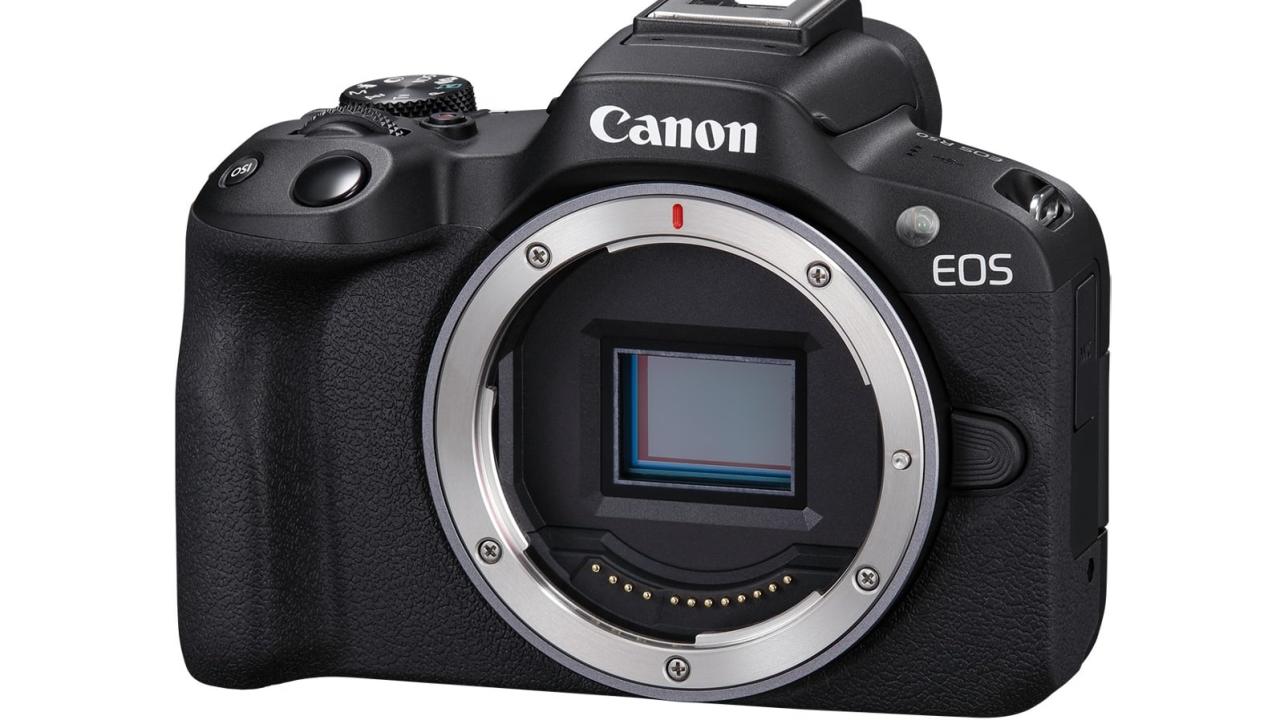Introduction
Welcome to the world of Canon digital SLR cameras, where cutting-edge technology meets the art of photography. Canon has long been recognized as one of the leading brands in the camera industry, known for their high-quality imaging devices. Whether you’re a beginner looking to dive into the world of DSLR photography, an advanced photographer seeking to upgrade your gear, or a professional photographer in need of top-tier equipment, Canon has a range of options to meet your needs.
With a multitude of models and features to choose from, selecting the best Canon digital SLR camera can be a daunting task. Factors such as image quality, sensor type, megapixel count, ISO performance, autofocus system, video recording capabilities, ergonomics, and connectivity options should all be considered to ensure that the camera suits your specific requirements.
This comprehensive guide will help you navigate through the sea of Canon digital SLR cameras and make an informed decision. We will explore the best options for beginners, advanced photographers, and professionals, allowing you to choose the camera that aligns with your skill level and photography goals. Additionally, we will delve into key aspects such as image quality, sensor types, megapixels, ISO performance, autofocus systems, video recording capabilities, ergonomics, design, connectivity options, battery life, and durability.
So, whether you are new to the world of DSLR cameras or a seasoned professional, sit back, relax, and prepare to embark on a journey to discover the best Canon digital SLR camera that will enhance your photography and unlock your creative potential.
Canon Digital SLR Cameras: An Overview
Canon digital SLR cameras are renowned for their exceptional image quality, advanced features, and user-friendly interface. These cameras are designed to cater to a wide range of photographers, from beginners to professionals, offering a versatile and reliable platform for capturing stunning photographs.
One of the standout features of Canon digital SLR cameras is their extensive lens lineup. Canon offers a vast selection of lenses, including wide-angle, telephoto, macro, and prime lenses, allowing photographers to explore different perspectives and achieve their desired creative vision. The ability to interchange lenses provides photographers with limitless possibilities and the flexibility to adapt to various shooting scenarios.
Canon has a strong reputation for innovation, continuously pushing the boundaries of technology in their camera systems. From high-resolution sensors to advanced image processing engines, Canon digital SLR cameras deliver exceptional image quality with rich detail, vibrant colors, and excellent low-light performance.
Additionally, Canon digital SLR cameras offer a wide range of shooting modes and customizable settings, enabling photographers to have full control over their creative process. Whether you prefer to shoot in full auto mode or manually adjust the settings, Canon cameras provide the flexibility to suit your shooting style.
Canon also understands the importance of user experience and ergonomics. Their cameras are designed with comfortable grips, intuitive controls, and easy-to-navigate menus, ensuring that photographers can focus on capturing the perfect shot without any distractions.
Furthermore, Canon digital SLR cameras are known for their durability and reliability. Constructed with high-quality materials and robust build quality, these cameras can withstand the rigors of professional use and challenging shooting conditions.
In summary, Canon digital SLR cameras are a top choice for photographers of all levels. With their outstanding image quality, extensive lens lineup, advanced features, and user-friendly interface, Canon cameras provide the tools necessary to capture breathtaking photographs and unleash your creative potential.
Factors to Consider When Choosing a Canon Digital SLR Camera
With a wide range of Canon digital SLR cameras available in the market, it can be overwhelming to determine which one is the best fit for your photography needs. To help you make an informed decision, let’s explore the key factors to consider when choosing a Canon digital SLR camera:
1. Skill Level:
Consider your level of expertise in photography. Are you a beginner, an experienced enthusiast, or a professional? Canon offers cameras tailored to each skill level, with varying features and capabilities.
2. Budget:
Set a budget for your camera purchase. Canon provides options across different price ranges, ensuring there’s something available for every budget.
3. Purpose:
Determine the main purpose of your camera. Are you planning to use it for travel photography, portrait photography, sports photography, or a mix of various genres? Understanding your intended use will help you choose a camera that suits your specific needs.
4. Sensor Size:
Consider the sensor size of the camera. Canon offers both full-frame and crop-sensor cameras. Full-frame sensors tend to deliver better image quality, particularly in low-light conditions and offer a wider field of view. Crop-sensor cameras, on the other hand, are often more affordable and lighter.
5. Megapixels:
Pay attention to the megapixel count. Higher megapixels allow for larger prints and more significant cropping flexibility. However, it’s essential to note that megapixels are not the sole indicator of image quality.
6. Autofocus System:
Consider the autofocus system of the camera. Look for a camera that has a fast and accurate autofocus system, especially if you plan to shoot fast-moving subjects or sports photography.
7. Video Capabilities:
If you’re interested in capturing video, evaluate the camera’s video capabilities. Canon digital SLR cameras offer varying levels of video recording options, including resolution, frame rates, and external microphone inputs.
8. Ergonomics and Design:
Take into account the ergonomics and design of the camera. Consider factors such as the weight, grip comfort, button layout, and overall ease of use. A camera that feels comfortable and intuitive in your hands will allow for a more enjoyable shooting experience.
9. Connectivity Options:
Check the connectivity options available. Does the camera have built-in Wi-Fi or Bluetooth for easy transfer of images to your smartphone or computer? Consider whether these features are essential to your workflow.
10. Lens Compatibility:
Remember to consider lens compatibility. Canon has an extensive range of lenses, so ensure that the camera you choose is compatible with the lenses you have or plan to invest in.
By carefully considering these factors, you can narrow down your options and choose a Canon digital SLR camera that aligns with your photography goals, budget, and skill level. Remember to prioritize the features that are most important to you, and make sure to try out the cameras in person to get a feel for their performance and usability.
The Best Canon Digital SLR Cameras for Beginners
If you’re new to photography and looking to venture into the world of digital SLR cameras, Canon offers several excellent options to kickstart your journey. Here are the top picks for the best Canon digital SLR cameras for beginners:
1. Canon EOS Rebel T7i / 800D:
The Canon EOS Rebel T7i, also known as the Canon 800D, is a versatile and feature-packed camera perfect for beginners. It boasts a 24.2-megapixel APS-C sensor, a vari-angle touchscreen display, and a user-friendly interface. The T7i offers excellent image quality, an intuitive autofocus system, and Full HD video recording capabilities.
2. Canon EOS Rebel SL3 / 250D:
The Canon EOS Rebel SL3, also known as the Canon 250D, is the smallest and lightest Canon DSLR camera that’s ideal for beginners. It features a 24.1-megapixel APS-C sensor, a vari-angle touchscreen display, and a beginner-friendly guided interface. The SL3 offers reliable performance, 4K video recording, and a user-friendly shooting experience.
3. Canon EOS 90D:
The Canon EOS 90D is a step up from entry-level cameras but still suitable for beginners who want room to grow. It features a higher resolution 32.5-megapixel APS-C sensor, a fast and accurate autofocus system, and 4K video recording capabilities. The 90D provides excellent image quality, improved ergonomics, and advanced features for those ready to delve deeper into the world of photography.
4. Canon EOS Rebel T8i / 850D:
The Canon EOS Rebel T8i, also known as the Canon 850D, is a user-friendly camera that offers a seamless transition from smartphone photography to DSLR. It features a 24.1-megapixel APS-C sensor, a vari-angle touchscreen display, and advanced autofocus capabilities. The T8i delivers excellent image quality, reliable performance in various shooting conditions, and 4K video recording.
5. Canon EOS 2000D / Rebel T7:
The Canon EOS 2000D, also known as the Canon Rebel T7, is an affordable entry-level camera that doesn’t compromise on image quality. It features a 24.1-megapixel APS-C sensor, a user-friendly interface, and built-in Wi-Fi for easy image sharing. The 2000D offers good performance, basic video recording capabilities, and an excellent starting point for beginners on a budget.
These Canon digital SLR cameras for beginners provide a user-friendly interface, excellent image quality, and essential features to help you learn and grow as a photographer. Consider your budget, desired features, and long-term goals to choose the camera that best suits your needs. Remember, it’s not just about the camera you choose, but also how you use it to capture your creative vision.
The Best Canon Digital SLR Cameras for Advanced Photographers
For advanced photographers who have honed their skills and are ready to take their photography to the next level, Canon offers a range of digital SLR cameras with advanced features and exceptional image quality. Here are the top picks for the best Canon digital SLR cameras for advanced photographers:
1. Canon EOS 6D Mark II:
The Canon EOS 6D Mark II is a full-frame camera that offers a perfect balance of performance and affordability. It features a 26.2-megapixel full-frame CMOS sensor, a DIGIC 7 image processor, and an advanced 45-point autofocus system. With excellent low-light capabilities, a vari-angle touchscreen, and built-in Wi-Fi and GPS, the 6D Mark II is an excellent choice for advanced photographers seeking high-quality images and versatile shooting options.
2. Canon EOS 7D Mark II:
The Canon EOS 7D Mark II is a robust and feature-packed camera designed for sports, wildlife, and action photography. It features a 20.2-megapixel APS-C sensor, Dual DIGIC 6 image processors, and an advanced 65-point all cross-type autofocus system. With a rugged build, high-speed continuous shooting, and outstanding autofocus performance, the 7D Mark II is the go-to camera for capturing fast-paced moments with precision and clarity.
3. Canon EOS 5D Mark IV:
The Canon EOS 5D Mark IV is a professional-grade camera with a full-frame sensor that delivers exceptional image quality and high-resolution photographs. It features a 30.4-megapixel full-frame CMOS sensor, Dual DIGIC 6+ image processors, and an advanced 61-point autofocus system. With 4K video recording capabilities, excellent dynamic range, and reliable performance, the 5D Mark IV is a favorite among advanced photographers shooting a wide range of genres.
4. Canon EOS-1D X Mark III:
The Canon EOS-1D X Mark III is the flagship camera of the Canon lineup, designed for professional photographers who demand the best in performance and image quality. It features a 20.1-megapixel full-frame CMOS sensor, Dual DIGIC X image processors, and an advanced 191-point autofocus system. With exceptional low-light capabilities, high-speed continuous shooting, and 4K video recording at 60fps, the EOS-1D X Mark III is the ultimate tool for capturing decisive moments with precision and accuracy.
5. Canon EOS R5:
The Canon EOS R5 is a mirrorless camera that combines high resolution with high-performance capabilities. It features a 45-megapixel full-frame CMOS sensor, an advanced Dual Pixel CMOS AF II system with 1053 AF points, and in-body image stabilization. With 8K video recording, fast burst shooting, and a weather-sealed body, the EOS R5 offers versatility for advanced photographers who require both still photography and video capabilities.
These Canon digital SLR cameras for advanced photographers provide cutting-edge features, exceptional image quality, and reliable performance. Consider your specific photography needs, such as the genre you focus on or the shooting conditions you encounter, to choose the camera that best suits your requirements. With these cameras in hand, you’ll be empowered to capture incredible images that showcase your talent and creativity.
The Best Canon Digital SLR Cameras for Professionals
For professional photographers who demand the utmost performance, precision, and image quality, Canon offers a range of digital SLR cameras that are specifically designed to meet the needs of professionals in various fields. Here are the top picks for the best Canon digital SLR cameras for professionals:
1. Canon EOS 5DS R:
The Canon EOS 5DS R is a high-resolution full-frame camera that caters to professional photographers who require exceptional image detail. It features a staggering 50.6-megapixel full-frame CMOS sensor with a low-pass filter cancellation effect, resulting in enhanced sharpness and detail in images. With a robust build, advanced image processing, and precise autofocus, the 5DS R is ideal for professionals working in fields such as landscape, studio, or commercial photography.
2. Canon EOS-1D X Mark III:
The Canon EOS-1D X Mark III is the flagship camera of the Canon lineup, designed for professionals who demand the highest level of performance, speed, and reliability. It features a 20.1-megapixel full-frame CMOS sensor, Dual DIGIC X image processors, and an advanced 191-point autofocus system. With its exceptional low-light capabilities, lightning-fast continuous shooting, and 4K video recording at 60fps, the EOS-1D X Mark III is the ultimate tool for professional photographers working in sports, wildlife, or documentary photography.
3. Canon EOS-1D C:
The Canon EOS-1D C is a specialized camera designed for professional videographers who require high-quality video recording capabilities. It features an 18.1-megapixel full-frame CMOS sensor and can record 4K video internally. With robust build quality, advanced video features, and extensive customization options, the EOS-1D C is the choice for professionals in the filmmaking and videography industry.
4. Canon EOS 5D Mark IV:
The Canon EOS 5D Mark IV is a versatile full-frame camera that offers a balance of high-resolution stills and advanced video capabilities. It features a 30.4-megapixel full-frame CMOS sensor, DIGIC 6+ image processor, and an advanced autofocus system. With 4K video recording, reliable performance, and excellent dynamic range, the 5D Mark IV is a go-to camera for professional photographers who want to excel in both still photography and videography.
5. Canon EOS R5:
The Canon EOS R5 is a mirrorless camera that combines high resolution with robust video capabilities, making it suitable for professionals who prioritize versatility. It features a 45-megapixel full-frame CMOS sensor, an advanced Dual Pixel CMOS AF II system, and in-body image stabilization. With 8K video recording, high-speed continuous shooting, and a weather-sealed body, the EOS R5 caters to professionals in various genres such as wedding, portrait, or commercial photography.
These Canon digital SLR cameras for professionals offer exceptional image quality, advanced features, and robust performance. Consider your specific photography or videography requirements, including resolution needs, specialized features, and shooting conditions, to select the camera that best suits your professional needs. With these cameras in your hands, you’ll have the tools necessary to capture incredible images and videos that meet the demanding standards of professional photography.
Comparing the Image Quality of Canon Digital SLR Cameras
Canon digital SLR cameras are renowned for their exceptional image quality, delivering stunning photographs with rich detail, vibrant colors, and impressive dynamic range. When comparing the image quality of Canon digital SLR cameras, several factors come into play:
Sensor Size:
Canon offers both full-frame and crop-sensor digital SLR cameras. Full-frame sensors tend to provide superior image quality due to their larger sensor size, capturing more light and offering better low-light performance. Crop-sensor cameras, while generally having smaller sensors, can still produce excellent image quality, especially in well-lit conditions.
Resolution:
The resolution of a camera, measured in megapixels, determines the level of detail captured in an image. Canon cameras come with varying megapixel counts, ranging from 20 to 50+ megapixels. Higher resolution cameras allow for larger prints and more flexibility in cropping without sacrificing image quality.
Image Processing:
Canon’s proprietary image processing technology, such as the DIGIC image processor, plays a significant role in delivering high-quality images. Advanced image processing algorithms help to reduce noise, preserve details, and enhance overall image sharpness.
Dynamic Range:
The dynamic range of a camera refers to its ability to capture a wide range of tones, from shadows to highlights, without losing detail. Canon digital SLR cameras typically offer excellent dynamic range, allowing photographers to capture scenes with both bright and dark areas with minimal loss of detail.
Color Rendition:
Canon cameras are known for producing vibrant and accurate colors straight out of the camera. Their color science has been refined over the years to deliver pleasing and true-to-life color reproduction, ensuring that your images look stunning with minimal post-processing.
Noise Performance:
Canon digital SLR cameras generally perform well in managing noise in images, even at higher ISO settings. The cameras employ advanced noise reduction algorithms to achieve clean and noise-free images, especially in well-exposed situations. This allows photographers to confidently shoot in low-light conditions without compromising image quality.
Overall, Canon digital SLR cameras consistently deliver impressive image quality across their lineup. However, it’s important to note that image quality is influenced by several factors, including sensor size, resolution, image processing, dynamic range, color rendition, and noise performance. It’s advisable to consider your specific photography needs and budget when choosing a Canon digital SLR camera to ensure that you select the best camera that aligns with your desired image quality requirements.
Canon Digital SLR Cameras: Full Frame vs. Crop Sensor
When it comes to Canon digital SLR cameras, one of the key considerations is whether to opt for a full-frame or crop sensor camera. Both options have their advantages and are suited for different types of photography. Here’s a comparison between full-frame and crop sensor Canon cameras:
Full-Frame Sensor:
Full-frame sensors in Canon cameras have the same dimensions as a traditional 35mm film frame. The larger sensor size allows for better light gathering capabilities, resulting in improved low-light performance and reduced noise at higher ISO settings. Full-frame cameras also have a shallower depth of field, making them ideal for portrait, landscape, and low-light photography where control over depth of field is crucial. Additionally, full-frame sensors offer a wider field of view, allowing for wider-angle shots with the same lens.
Crop Sensor:
Crop sensor cameras, as the name suggests, have a smaller sensor size compared to full-frame cameras. The smaller sensor results in a narrower field of view, effectively cropping the image compared to what would be captured on a full-frame sensor. However, crop sensor cameras offer some advantages. They are generally more affordable, lighter, and have a higher effective focal length due to the crop factor. This makes them well-suited for sports, wildlife, and telephoto photography where the extra reach is beneficial. Crop sensor cameras also tend to have a higher pixel density, making them suitable for capturing finer details and for situations where cropping is required without sacrificing image quality.
The choice between full-frame and crop sensor Canon digital SLR cameras ultimately depends on your photography style, budget, and specific needs. If you require exceptional low-light performance, wide-angle shots, and greater control over depth of field, a full-frame camera is a great choice. On the other hand, if you prioritize affordability, portability, and the added reach of telephoto lenses, a crop sensor camera may be a better fit.
It’s essential to consider your shooting style, desired image quality, types of photography you engage in, and budget constraints when deciding between full-frame and crop sensor Canon digital SLR cameras. Understanding the advantages and disadvantages of each sensor type can help you make an informed decision on which camera best suits your needs and allows you to capture stunning photographs.
Canon Digital SLR Cameras: Understanding Megapixels
Megapixels are often a focal point of discussion when it comes to digital cameras, including Canon digital SLR cameras. Understanding what megapixels are and their impact on image quality is important when choosing a camera that meets your needs. Here’s a breakdown of what megapixels are and their significance:
Megapixels refer to the resolution of a digital image and represent the total number of pixels (individual dots of color) that make up an image. One megapixel is equivalent to one million pixels. Higher megapixel counts indicate larger images with more detail, allowing for larger prints or more cropping flexibility without sacrificing image quality.
However, it’s essential to note that megapixels alone do not determine the overall image quality. While higher megapixel counts can produce larger and more detailed images, other factors such as sensor size, image processing capabilities, and lens quality also influence the final image quality.
Higher megapixel counts are beneficial in situations where capturing fine details is essential, such as in landscape or architectural photography. They also provide greater flexibility in post-processing, allowing for more cropping options without compromising the image’s resolution.
On the other hand, for photographers who primarily share images digitally or don’t require large prints, lower megapixel counts can still deliver excellent image quality while providing the advantages of smaller file sizes and faster image processing.
It’s worth noting that higher megapixel counts may require more storage space for images and may require more processing power for editing. Additionally, larger megapixel counts can also lead to increased noise levels in low-light situations, as smaller pixels on the sensor may struggle to capture light effectively.
When choosing a Canon digital SLR camera based on megapixels, consider the type of photography you engage in and your specific requirements. If you frequently print large images or need ample cropping flexibility, a higher megapixel camera may be a good choice. However, if you primarily share images digitally or have more modest printing needs, a camera with a lower megapixel count can still produce outstanding results while potentially offering advantages in terms of file size and low-light performance.
Megapixels should not be the sole deciding factor when selecting a Canon digital SLR camera. Consider the overall image quality, sensor size, image processing capabilities, features, and lens compatibility to ensure that the camera you choose meets your specific needs and allows you to capture stunning photographs.
Canon Digital SLR Cameras: Exploring ISO Performance
ISO is a critical aspect of digital photography, including Canon digital SLR cameras. ISO measures the sensitivity of the camera’s image sensor to light. Understanding ISO and its impact on image quality is essential in capturing stunning photographs in various lighting conditions. Let’s delve into the world of ISO and its significance in Canon digital SLR cameras:
ISO settings range from low to high values, typically starting from around ISO 100 and going up to ISO 6400 or higher in some cameras. Lower ISO values, such as ISO 100 or 200, are suitable for well-lit situations, delivering images with minimal noise and excellent detail.
As the lighting conditions become dimmer, increasing the ISO allows the camera to capture more light, resulting in brighter images. However, higher ISO settings can introduce digital noise, which appears as grain or smudgy artifacts in the image. The challenge lies in finding the right balance between ISO and image quality.
Canon digital SLR cameras are known for their impressive ISO performance, particularly in their higher-end models. They employ advanced technologies, such as improved sensor designs and dedicated noise reduction algorithms, to achieve cleaner and more usable results even at higher ISO settings.
For low-light photography or situations where you need to freeze fast-moving subjects, having a camera with excellent ISO performance is crucial. It allows you to maintain a faster shutter speed and capture sharp images without compromising image quality.
While Canon cameras perform admirably at higher ISO settings, it’s important to keep in mind that noise levels may still increase as ISO values rise. Newer models or higher-end cameras tend to exhibit better noise control, allowing you to push the ISO limits further while maintaining reasonable image quality.
Post-processing software, such as Adobe Lightroom or Canon’s proprietary Digital Photo Professional, can also help in reducing noise and improving overall image quality when working with higher ISO images.
When selecting a Canon digital SLR camera based on ISO performance, consider the lighting conditions you frequently encounter in your photography. If you often shoot in low-light situations or require the ability to work with high ISO settings while maintaining excellent image quality, opt for a camera that offers impressive ISO performance.
It’s important to note that ISO is just one component in achieving optimal image quality. Factors such as sensor size, lens quality, and image processing capabilities also contribute to the overall performance in varying lighting conditions. Consider these aspects in conjunction with ISO performance when choosing a Canon digital SLR camera that suits your photography needs.
Canon Digital SLR Cameras: Evaluating Autofocus Systems
The autofocus system is a critical feature in Canon digital SLR cameras, enabling photographers to quickly and accurately focus on their subjects. Evaluating the autofocus system is essential when choosing a camera that meets your specific needs. Here are some factors to consider when evaluating the autofocus system in Canon digital SLR cameras:
Focus Points:
Canon cameras come with different numbers of focus points, ranging from a few to several dozen. The number and spread of focus points determine the flexibility and precision of autofocus. More focus points allow for greater accuracy in tracking moving subjects and composing shots, particularly in dynamic or fast-paced situations.
Types of Focus Points:
Canon cameras offer various types of focus points, including cross-type, dual cross-type, and diagonal cross-type points. Cross-type points are more sensitive to both vertical and horizontal lines, providing better overall focus accuracy. Dual cross-type and diagonal cross-type points offer even higher precision, particularly when focusing on moving subjects or in challenging lighting conditions.
Autofocus Modes:
Canon cameras typically offer a range of autofocus modes, including single-shot autofocus (One Shot) and continuous autofocus (AI Servo). Single-shot autofocus is suitable for static subjects, while continuous autofocus is designed for moving subjects. The ability to switch between autofocus modes allows for versatility in different shooting situations.
Tracking and Subject Detection:
High-end Canon cameras often feature advanced tracking and subject detection capabilities. These systems use sophisticated algorithms and advanced sensors to track subjects, maintain focus, and adjust focus points as needed. Such features are particularly beneficial for sports, wildlife, or action photography, where accurate subject tracking is crucial.
Low-Light Performance:
Assessing the autofocus system’s performance in low-light situations is essential, as the ability to acquire focus in dim lighting conditions is critical for many types of photography. Canon cameras with advanced autofocus systems often provide good low-light performance, maintaining focus accuracy even in challenging environments.
When evaluating the autofocus system in Canon digital SLR cameras, consider your specific photography needs. If you primarily shoot static subjects, a camera with a reliable single-shot autofocus system may suffice. However, if you frequently capture fast-moving subjects or work in complex lighting scenarios, a camera with a robust continuous autofocus system and advanced tracking capabilities would better suit your needs.
It’s worth noting that while Canon cameras offer excellent autofocus capabilities, the performance may vary across different models. Newer or higher-end Canon cameras tend to have more advanced autofocus systems with improved accuracy, speed, and subject tracking. It’s advisable to research and compare the autofocus capabilities of different models to find the camera that best aligns with your specific photography requirements.
Canon Digital SLR Cameras: Video Recording Capabilities
In addition to capturing stunning photographs, Canon digital SLR cameras are also capable of recording high-quality videos. Whether you’re a professional videographer or someone who wants to explore the world of videography, Canon cameras offer a range of video recording capabilities. Here are some key aspects to consider when evaluating the video recording capabilities of Canon digital SLR cameras:
Resolution:
Canon cameras provide different resolution options for video recording, including Full HD (1080p), 4K, and even 8K in some newer models. Higher resolution videos offer more detail and allow for more flexibility in cropping or post-processing. Consider your intended use for the videos and select a camera that provides the desired resolution.
Frame Rates:
The frame rate refers to the number of frames captured per second. Canon cameras offer a variety of frame rate options, including 24 fps, 30 fps, and 60 fps. Higher frame rates, such as 60 fps, provide smoother and more fluid motion, while lower frame rates, such as 24 fps, are commonly used for a cinematic look.
Codec Options:
Canon cameras offer different codec options for video recording, such as H.264 and H.265. The codec determines how the video is compressed and affects factors like file size and image quality. Some cameras may offer higher bit rates or better compression algorithms, resulting in improved video quality or smaller file sizes.
Bit Depth and Color Sampling:
Bit depth and color sampling refer to the amount of color and tonal information captured in the video. Cameras with higher bit depth and color sampling capabilities can produce videos with more accurate colors, smooth gradients, and better dynamic range. These features are essential for professionals who require precise color grading or post-processing workflows.
Audio Recording:
In addition to video, consider the audio recording capabilities of Canon cameras. Look for features like built-in microphones, microphone inputs, and audio level controls. External microphones can greatly enhance the audio quality and allow for better sound capture in different environments.
Image Stabilization:
Canon cameras may offer in-body or lens-based image stabilization technology, reducing camera shake and producing smoother footage. This feature is particularly beneficial for handheld shooting or when using lenses without image stabilization capabilities.
When evaluating the video recording capabilities of Canon digital SLR cameras, consider your specific videography needs. Think about the type of videos you want to create, whether it’s documentaries, vlogs, or cinematic productions. Assess the resolution, frame rate, codecs, bit depth, color sampling, audio recording options, and image stabilization features that will best serve your videography goals.
It’s important to note that while Canon digital SLR cameras offer impressive video recording capabilities, higher-end models usually provide more advanced features and better overall performance. Research and compare the specifications and functionalities of different models to find the camera that suits your videography requirements and helps you capture stunning videos with professional-quality results.
Canon Digital SLR Cameras: Ergonomics and Design
Ergonomics and design play a crucial role in the usability and overall shooting experience of Canon digital SLR cameras. When choosing a camera, it’s important to consider how it feels in your hands and whether the design suits your shooting style. Here are some key aspects to evaluate regarding the ergonomics and design of Canon digital SLR cameras:
Body Size and Weight:
Canon offers a range of camera bodies in various sizes and weights. Consider the size and weight that feels comfortable for you to hold and carry, especially if you plan to use the camera for extended periods or when traveling. Heavier bodies may offer better stability, while lighter bodies are more portable.
Grip Comfort:
Pay attention to the grip design and comfort. A well-designed grip allows for a secure and comfortable hold on the camera, reducing fatigue during extended shooting sessions. Canon cameras feature different grip designs, accommodating various hand sizes and preferences. It’s advisable to hold the camera in person to assess its comfort level for you.
Button Layout and Control Placement:
The layout and placement of buttons and controls on the camera body significantly impact ease of use and quick access to essential functions. Canon cameras generally have intuitive control layouts, with buttons and dials strategically placed for easy access and quick adjustments. Consider whether the button placement and control layout align with your shooting style and preferences.
Viewfinder and LCD Display:
Certain Canon cameras have an optical viewfinder, while others feature an electronic viewfinder (EVF) or a combination of both. The choice between an optical viewfinder and an EVF is a personal preference, with each providing distinct advantages. Additionally, evaluate the quality and resolution of the LCD display, as it is crucial for reviewing images and navigating menus.
Weather Sealing and Durability:
Canon cameras may offer weather sealing, protecting them from dust, moisture, and harsh conditions. This feature is beneficial for photographers who frequently shoot in challenging environments or under unpredictable weather conditions. Consider your shooting requirements and select a camera with the appropriate level of weather sealing and durability.
Customization Options:
Canon cameras often provide customization options, allowing you to configure certain buttons and controls according to your preferences. This enables you to tailor the camera’s functionality to your shooting style and easily access frequently used features.
Evaluating the ergonomics and design of Canon digital SLR cameras is essential to ensure a comfortable shooting experience and ease of use. Consider the body size, grip comfort, button layout, viewfinder, LCD display, weather sealing, durability, and customization options that best suit your needs.
Personal preference and shooting style will ultimately determine which Canon camera feels most comfortable and intuitive to you. It’s recommended to visit a store and physically handle the cameras to assess their ergonomics and design before making a purchase decision. With a camera that feels natural in your hands, you’ll be able to focus on capturing stunning images without distractions.
Canon Digital SLR Cameras: Connectivity Options
Canon digital SLR cameras offer a range of connectivity options that enhance the versatility and convenience of your photography workflow. When considering a camera, it’s important to evaluate the available connectivity features that align with your specific needs. Here are some key connectivity options to consider when choosing a Canon digital SLR camera:
Wi-Fi and NFC:
Many Canon cameras come equipped with built-in Wi-Fi and Near Field Communication (NFC) capabilities. These features allow you to wirelessly connect your camera to compatible devices, such as smartphones, tablets, or computers, for easy image transfer or remote control. With Wi-Fi and NFC, you can quickly share your images on social media or back them up to the cloud.
Bluetooth:
Bluetooth connectivity is a convenient feature that enables constant and low-power communication between your camera and a compatible smartphone or tablet. With a Bluetooth connection, you can remotely control your camera, transfer images, or utilize GPS data tagging for location information.
USB and HDMI:
Canon cameras generally offer USB and HDMI ports for wired connections. The USB port allows you to connect your camera directly to a computer for image transfer, remote control, or tethered shooting. The HDMI port allows you to connect your camera to a compatible display for direct viewing of your images or videos.
Wireless File Transmitter:
Some higher-end Canon cameras offer the option to attach a dedicated wireless file transmitter. This attachment provides advanced wireless connectivity, including higher transfer speeds and extended range, making it ideal for professional photographers who require seamless and fast file transfer capabilities.
Canon Camera Connect App:
The Canon Camera Connect app is a powerful tool that extends the connectivity options of compatible Canon cameras. By downloading this app on your smartphone or tablet, you can wirelessly control your camera, transfer images, or utilize advanced features like remote live view shooting or touch autofocus within the app.
Evaluating the connectivity options of Canon digital SLR cameras is crucial to ensure smooth integration into your photography workflow. Consider which connectivity features align with your specific needs, whether it’s wireless image transfer, remote control capabilities, or seamless integration with other devices and software.
It’s worth noting that not all Canon cameras offer the same connectivity options. Higher-end models often provide more advanced wireless capabilities, improved transfer speeds, and compatibility with external accessories. Research and compare the connectivity features of different models to find the camera that suits your specific requirements.
With the right connectivity options, your Canon digital SLR camera can seamlessly integrate into your photography workflow, allowing you to effortlessly transfer and share your images, control your camera remotely, and streamline your creative process.
Canon Digital SLR Cameras: Battery Life and Durability
Battery life and durability are crucial considerations when choosing a Canon digital SLR camera. No photographer wants to miss out on capturing important moments due to a drained battery, and having a durable camera ensures it can withstand the rigors of regular use. Let’s explore these aspects in more detail:
Battery Life:
Canon digital SLR cameras are known for their impressive battery life, allowing you to shoot for extended periods. The battery life varies between models, with higher-end cameras generally offering longer battery life due to larger and more advanced battery capacities. Consider your shooting needs and frequency when evaluating battery life to ensure it aligns with your requirements.
Battery Types:
Canon cameras use different types of batteries, such as LP-E6 and LP-E17. Different battery types may have varying capacities, charging times, and compatibility across camera models. It’s advisable to consider the availability and cost of spare batteries when choosing a camera, especially if you anticipate frequent shooting sessions or extended travel periods.
Battery Grip Options:
Canon offers battery grip options for some camera models, providing extended battery life and additional shooting controls. Battery grips allow photographers to use multiple batteries simultaneously, effectively doubling the camera’s battery life. They also improve the ergonomics when shooting in the vertical orientation, as they provide a comfortable grip and access to essential camera controls.
Durability and Build Quality:
Canon digital SLR cameras are built with durability in mind, using high-quality materials and robust construction. They are designed to withstand regular use and adverse weather conditions. Weather sealing features protect against dust and moisture, making them suitable for outdoor and challenging shooting environments. Consider the level of durability and weather sealing required for your photography style and shooting conditions.
Shutter Life:
Canon cameras have a specified shutter life, indicating the number of shots the shutter mechanism is designed to handle before potential replacement. Higher-end cameras generally have a longer shutter life expectancy, important for professional photographers who engage in high-volume shooting or require long-lasting equipment.
When choosing a Canon digital SLR camera, evaluate the battery life and consider your specific shooting needs to ensure it can sustain your photographic adventures without frequent battery changes. Consider the battery type, availability of spare batteries, and the option of battery grips to extend the camera’s battery life.
Additionally, assess the durability and build quality of the camera to ensure it can withstand the demands of your photography style. Whether you’re a casual enthusiast or a professional photographer, a durable camera ensures it can handle regular use and adverse shooting conditions, providing peace of mind and longevity in your investment.
By considering battery life and durability, you can choose a Canon digital SLR camera that aligns with your shooting requirements and offers reliable performance, allowing you to focus on capturing stunning images without worrying about power drains or equipment fragility.
Conclusion
When it comes to Canon digital SLR cameras, there is a wide range of options to suit photographers of all skill levels and preferences. Through this comprehensive guide, we have explored various aspects to consider when choosing a Canon digital SLR camera, including image quality, sensor size, megapixels, ISO performance, autofocus systems, video recording capabilities, ergonomics, connectivity options, battery life, and durability.
Canon’s commitment to innovation and excellence is evident in their cameras, which consistently deliver exceptional image quality and advanced features. Whether you’re a beginner, an advanced photographer, or a professional, Canon offers cameras that cater to your specific needs and goals.
The key is to consider your skill level, budget, shooting style, and specific requirements when selecting a Canon digital SLR camera. Beginners can choose from entry-level models that offer an easy learning curve, while advanced photographers may opt for cameras with advanced features like full-frame sensors and high megapixel counts. Professionals can find cameras with top-notch autofocus systems, impressive video capabilities, and durable build qualities to meet the demands of their work.
It’s recommended to research and compare the specifications, features, and performance of different Canon camera models to find the perfect fit for your photography needs. Visiting a retailer and testing the cameras in person will further help you evaluate ergonomics, ease of use, and overall feel.
Remember, a great camera is just the beginning. Investing in high-quality lenses, mastering essential photography techniques, and continuously honing your skills will have a significant impact on the images you create.
With the right Canon digital SLR camera in your hands, you’ll have the tools necessary to capture stunning photographs, unleash your creativity, and embark on an exciting journey in the world of digital photography.







